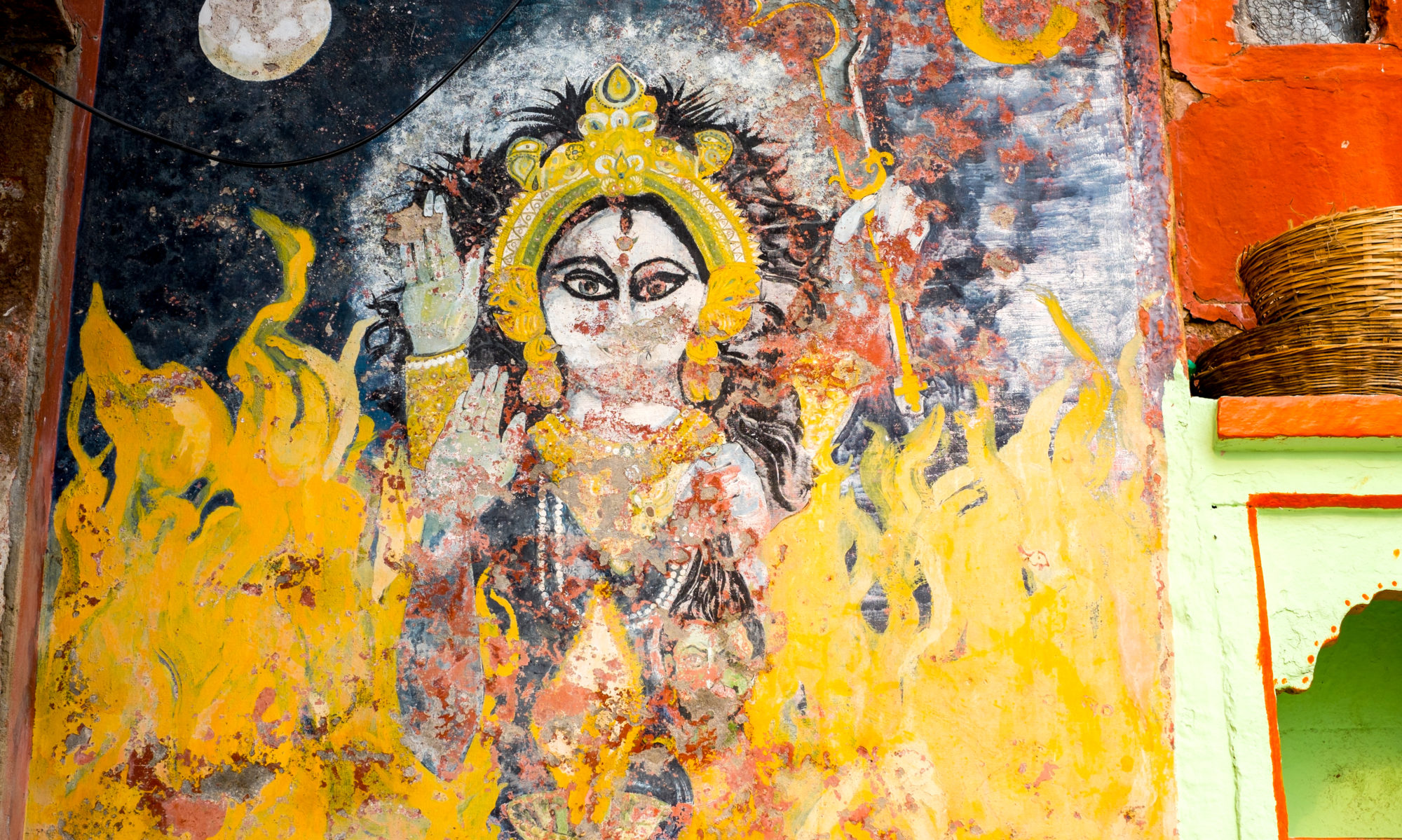 First and foremost, an announcement: Tantraloka Studies with Dr. Mark Dyczkowski is scheduled to start on 17th November on Karthik Purnima. The 10 day program will include two day outing to sacred Vindhyachal and Pancakrosha. We will also have a chance to listen to wonderful Sitar music by Mark to reinforce the teachings :). Now on to the blog..
First and foremost, an announcement: Tantraloka Studies with Dr. Mark Dyczkowski is scheduled to start on 17th November on Karthik Purnima. The 10 day program will include two day outing to sacred Vindhyachal and Pancakrosha. We will also have a chance to listen to wonderful Sitar music by Mark to reinforce the teachings :). Now on to the blog..
“A very quick absorption is attained in a flash during the sound of this tune, because, being so close to pure Consciousness, it is quite akin to it” -Tantraloka, 3.239*
Masters of Tantric schools advocated a spiritual path that combined “bhukti” (attainment of enjoyment) and “mukti” (attainment of liberation). They considered both of them as objectives of human life.
Even before Shaivism and Shaktism, aesthetically pleasing elements were presented as aids to spiritual development in other branches as well. Song and dance were part of pre-vedic cultures and the melodic Samaveda is well known to all. Yajnavalkyasmriti considered the music of vina to be a powerful aid in realizing the highest truth. In the Vijyanabhairava, the pleasure aroused by song and music is accepted as a means to enter into the state of pure and blissful consciousness.
While Abhinava’s explanation of music and other objects pleasing to the senses in the context of self-realization will be a topic of a future blog, we know from Madhuraja that Abhinava sported a Vina by his side and played it occasionally. In this post, we present you a short bhajan by Dr. Dyczkowski to go with your Sadhana. Enjoy.
** Blog content adapted from “Specific Principles of Kashmir Shaivism” by B.N. Pandit.


This is like Muthuswami Deekshitar who was a SriVidya Upasaka. It is said that he received a veena from Gangama in Kashi.
I recently read about the note Deva Gandhara and how this can take one to the nirvikalpa samadhi. The Siddha had warned to watch out for this as this would take one to the nirvikalpa state which is beyond return. Is there any specific note mentioned in Sri Abhinava Gupta’s works?
Thanks
Geetha
We don’t know if Abhinava makes any references to specific Ragas in Tantraloka (we will consult with experts), but this question led us to study bit more about the history of music in India which we’d like to share as a response. Experts seem to broadly identify 3 periods of evolution:
1. Sanskritic Tradition: Sama veda proposed a tonal structue of seven notes mapping to fixed frequency instruments. The puranas and great epics further strengthened the position of music – Narada, Gandharvas etc were portrayed as experts of music. The first most imporntat written text on music is Bharata’s Natya Sastra (3rd century CE) where the scale is described into 22 micro-tones which are further combined into groups to form a specific octave. This is further reinforced and elaborated by a follow-up text called Dattilam where scales, srutis and arrangement of notes (mrchhana), tanas are discussed. The development accelerated during Gupta period with great contributions from Kalidasa, Narada (author of Sangita Makarandha), Jayadeva etc culminating in Sarangadeva (author of Sangita Ratnakara) in 13th century.
2.Medieval Period: This marked the period of Persian and Arabic influence which brought whole series of musical innovations into the sub-continent. There were several prominent figures (e.g. Amir Khusurau) and sub-periods which are well documented. This period seem to culminate with Tansen who introduced new innovations including ragas and particular compositions.
3.Modern Era: One could argue that this period was accentuated by the decline of guru-sishya traditions and emergence of two great figures Vishnu Digambar Paluskar and Vishnu Narayan Bhatkhande who brought music from aristocracy to broader public.
Throughout the 2nd and 3rd periods, one is tempted to argue that South India saw minimal musical influence from Arabic in-course which ultimately led to forking of Carnatic music as a distinct system.
Very uplifting music. wonder what raga?